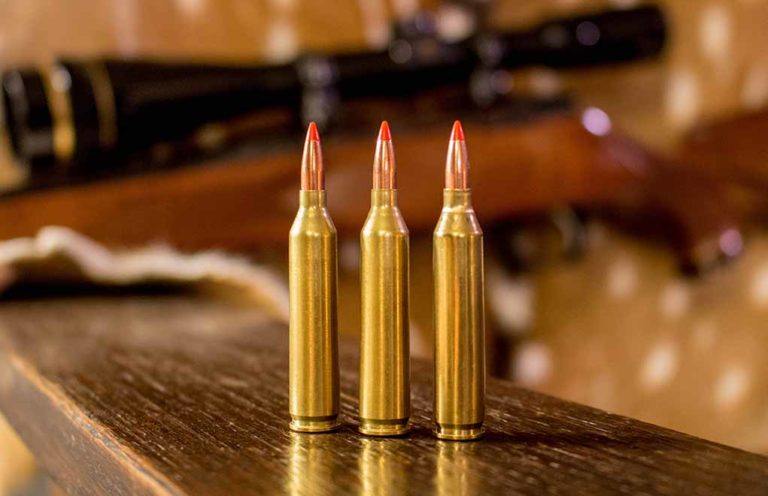
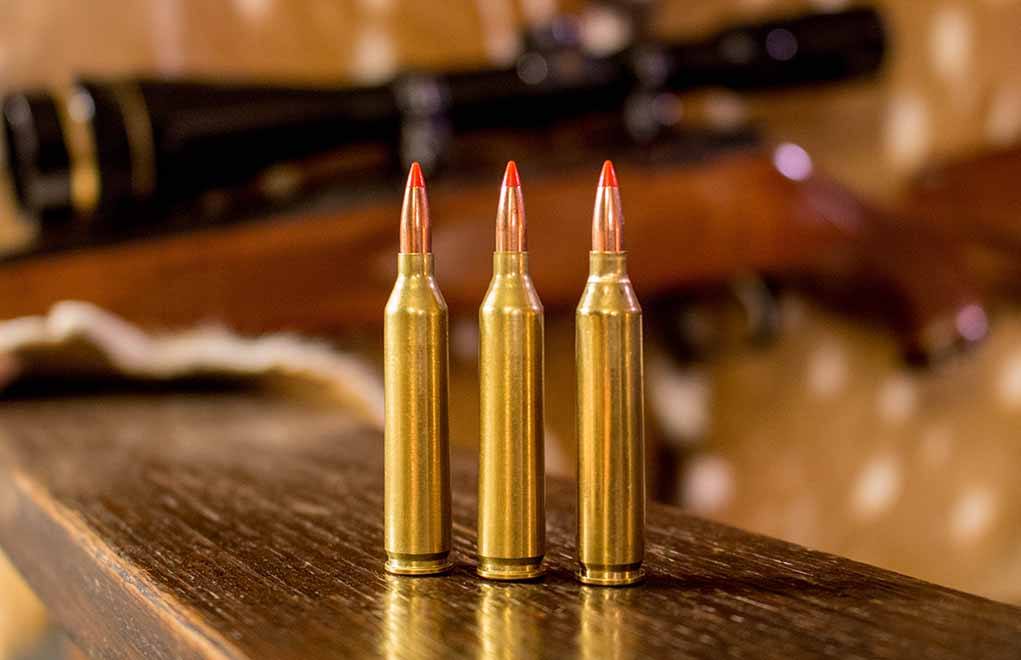
No matter the factory ammo, some rifles are just plain dogs. Or are they? The right handload might change your perspective and the gun's performance.
How Handload Ammo Helps Your Shooting:
- Barrel Harmonic
- Obscure Or Discontinued Cartridges
- Ample Ammunition Options
- Plenty Of Ammo At Your Disposal
It was a family heirloom, a lever-action of good pedigree and an undeniable American classic rifle in an equally classic cartridge. The Savage Model 99 had belonged to my friend Mike Buser’s grandfather and was handed first down to his father and subsequently to him.
Understanding the importance of a family heirloom, Mike wanted to see the rifle in the woods again, but there was one small issue: It didn’t shoot well.
“Minute-of-softball” is not a scientific unit of measure, but it aptly described the groups this .300 Savage delivered with many different types of factory ammunition. Action screws were set to the proper torque, nothing on the stock was obstructing the barrel, the scope mounts were set up correctly, and a quality scope was used. But still, the old lever gun threw a ballistic temper tantrum. I can’t calculate the exact amount of money Mike spent on different brands of ammunition, but it was significant. He had just about given up, relegating the rifle to a 50-yard wonder and used to fill doe tags in the thickets, where the shooting is close.

I suggested that before we proclaimed that condemnation, we should try to see what, if anything, handloaded ammunition would do in this picky rifle.
Our first attempts didn’t yield much of an improvement, but one of the test loads cut the size in half, printing just shy of 2 inches. So, with that for a starting point, we slowly tweaked the load, changing primers and bullets and varying the powder charge by a couple of tenths of a grain. We ended up with a 165-grain Sierra GameKing boattail, driven by a healthy dose of Ramshot’s TAC spherical powder and sparked by a CCI200 primer—and a neat, little, 7/8-inch, three-shot group at 100 yards. This handloaded ammunition made a believer out of Mike … and he’s gone right down the rabbit hole.
I’m not going to suggest that handloaded ammunition is going to cut your group size in half with every rifle or even that handloaded ammunition will beat factory ammunition in every instance—I’ve seen more than a few rifles that demonstrate their best accuracy with factory loads—but it does solve a good many problems.
Barrel Harmonics And Stomach Ulcers
Assuming there are no mechanical issues with a rifle and that it’s properly benchrested with a competent shooter, it’s not difficult to see how both different bullet profiles and varying powder charges could result in different group sizes.

The shockwaves sent down the barrel from the violent explosion of the powder charge and engaging of the bullet into the rifling, and then the wave generated by the bullet’s journey down that barrel, create a certain set of harmonics. If—and it’s a big if—those harmonics “agree” with the conformation and construction of the barrel, you’ll get repeatable results. This is what we collectively refer to as “accuracy,” although the proper term is “precision.” The more repeatable the results, the more precise the rifle is deemed to be.
The factory ammunition—no matter what level of detail the company affords—will produce a single set of harmonics. If your barrel agrees with those harmonics, you’ve got a winner. If it doesn’t (and that is a common occurrence), it’s neither the fault of the barrel nor the ammunition. I liken it to a pair of well-constructed shoes that just don’t fit your particular feet.
When you handload your ammunition, you have control over those harmonics. Perhaps you will have a difficult time predicting those changes in harmonics, but at the very least, it gives the option of changing the harmonics; and you can, and will, eventually stumble upon a combination that is suitable for your purposes.

As a reloader/handloader, you have the option of changing powder, primer, brand of case and bullet profile, and you use that fact to find a single accurate load. And you can also use the load development process to tailor the ammunition to the hunt.
In the grand scheme of things, I will usually happily sacrifice 100 fps in velocity in order to obtain the accuracy I desire. It’s an easier trade in the target rifles and faster hunting cartridges, but it might prove unacceptable in a slower double-rifle cartridge, with which the velocity is paramount to proper regulation. Velocity is certainly an observable attribute, and you’ll find that through the use of a good chronograph, you can equate accuracy/precision with consistent velocities, whether it’s a handload or a factory load.
The overall length of factory ammunition is set at, or shorter than, the SAAMI or CIP standard dimension. This is due to the fact that this ammunition has to function safely in rifles and handguns of all shapes and sizes.
When you’re loading for one specific firearm, you have the benefit of being able to vary the bullet’s seating depth and, therefore, the overall length of the cartridge. Be aware that you never want your bullet to be seated out so long that it touches the lands of the rifling; but there is no doubt that minor changes in seating depth can have a dramatic affect on the accuracy of your rifle.
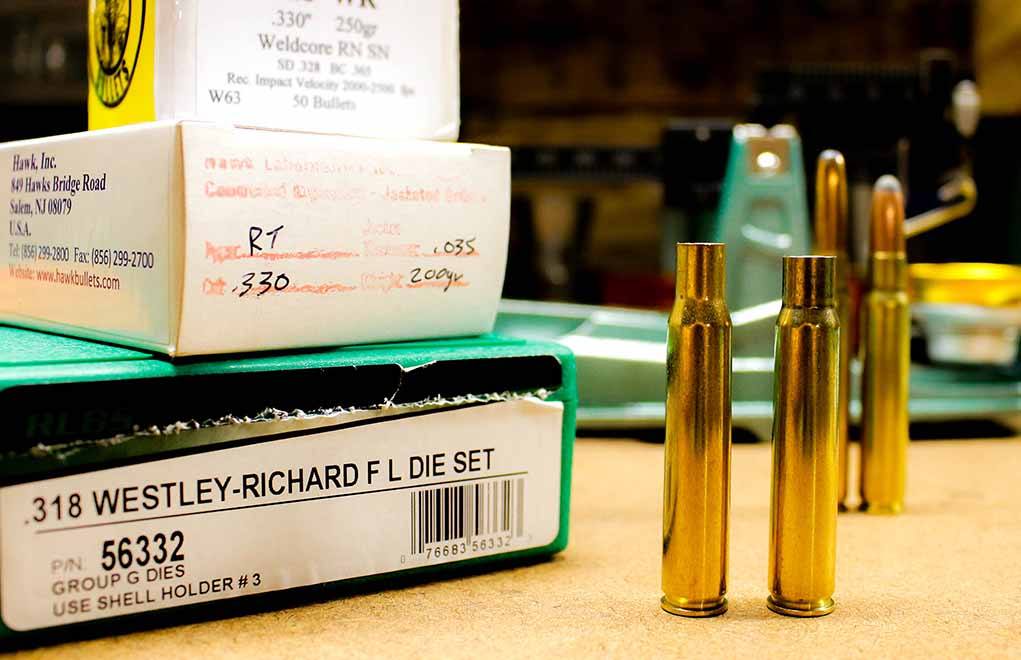
The lead-free copper bullets have shown to be particularly sensitive to seating depth changes, and some powder/bullet combinations that I have deemed unworthy in a particular rifle have proved me wrong with a slight change in seating depth.
Again, handloading the ammunition gives all sorts of flexibility and more than one opportunity to make the change in either component or one of the lading parameters, which will greatly improve accuracy.
Obscure Cartridges, Unavailable Combinations and Discontinued Loadings
There are times when any ammunition is better than none. Factory loadings for those cartridges that have faded into obscurity are dropped all the time, and sometimes, handloading your ammunition is the only answer. I’ve helped many folks with older rifles that were in perfectly good condition, but they simply couldn’t find ammunition.
In the last couple of years, a few custom shops have popped up (including my own Massaro Ballistic Laboratories) to fill these voids, but it wasn’t long ago that “rolling your own” for these old guns was the only way to keep them fed.
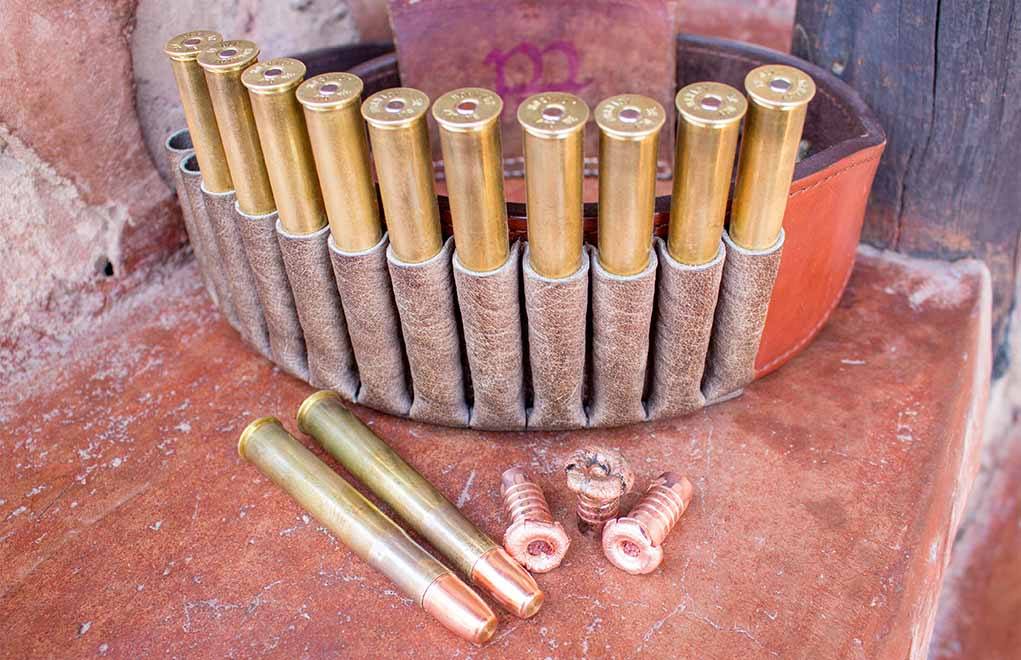
Long before the .338 Winchester Magnum was adopted as America’s elk cartridge, the .338-inch bore was occupied by a rimmed cartridge: the .33 Winchester. Using 200-grain, flat-point bullets, the .33 Winchester was offered in Winchester’s Model 1886 lever-action and the .1885 single-shot and was a popular and effective cartridge. An acquaintance had a very clean ’86, as well as 60 or so pieces of empty brass. Hornady offers the 200-grain flat-point, and I simply procured a set of Redding dies. As a result, that gentleman was happily shooting his old rifle again.
I’ve written quite a bit about the .318 Westley Richards I had built, but one of the major factors in deciding to build the rifle was the fact that I could (and certainly do) easily convert .30-06 Springfield brass. The same can be said for .338-06 brass, .257 Roberts brass or any of the cartridges that were once derived from a popular parent cartridge: With a good set of reloading dies and possibly some trimming, brass cases can be made. I’m currently in the process of making cases for the .17-223 Remington wildcat, which actually had factory rifles made in the late 1960s (imported by Harrington & Richardson), yet no factory ammunition was ever produced.
Load Up On Reloading Info:
- The Flexible And Forgiving .30-06 Springfield
- The .45 Colt: A Wheelgun Classic
- .300 Win. Mag.: The Answer To Most Hunting Questions
- Tips For Reloading the .223 Remington
Some component bullets are unavailable in loaded form and must be reloaded. I’ve had excellent experiences with the North Fork semi-spitzer soft-points and cup solids, the Peregrine BushMaster and PlainsMaster, and the Cutting Edge Raptor. All of them must be handloaded. I’ve taken a good number of buffalo with that Peregrine Bushmaster in the .450-400 3-inch NE, .404 Jeffery and .470 Nitro Express; and, without handloading my ammo, I’d have never found that bullet.
There are some excellent designs (I’m a huge proponent of the Woodleigh Hydrostatically Stabilized solid) that are loaded in the popular safari calibers such as .375 H&H, .416 Rigby and Remington, .458 Lott, and .470 and .500 Nitro Express. However, if you (like me) want to shoot that excellent Woodleigh bullet in the .404 Jeffery, handloading is your only option.
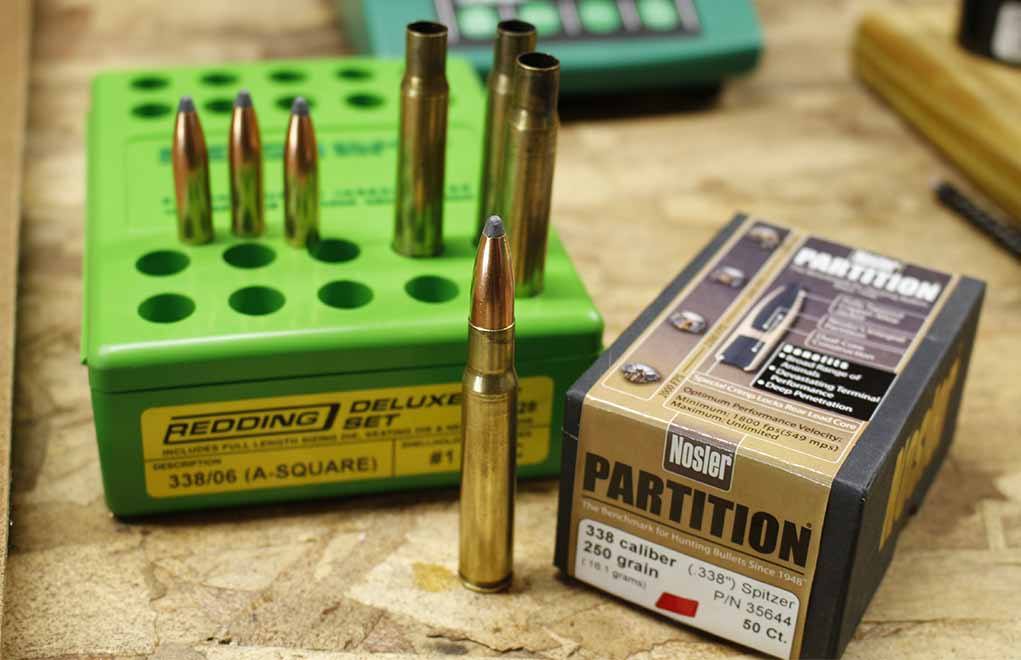
The .375 Remington Ultra Magnum, which offers a 400 fps velocity increase over the .375 H&H Magnum, has only been offered with soft-point bullets. The slower .375 H&H is certainly trusted for the large, dangerous species such as Cape buffalo, elephant and hippo, so there’s no doubt that the .375 RUM can handle the same species; and a good, non-expanding solid is needed for these animals, especially for elephant and hippo. If they can’t be bought, they must be handloaded.
Unpopular Cartridges and Travel
I’m pretty sure if you’ve read into the pleasures and pitfalls of traveling to hunt, you’ve read the following advice: Take a popular caliber (.30-06 Springfield, .270 Winchester, .300 Winchester Magnum or, in the case of Africa, .375 H&H), because there will always be ammunition in camp, should your ammo be lost. If you read between the lines, this pearl of wisdom is also saying that planning to hunt with the obscure cartridge—or rare handload—is a bad idea because of the risk of having a rifle with no ammo or vice versa and with no hope of replacing them.
At the risk of jinxing myself, I’ve hunted four continents and 10 countries and have not, as of the date of this writing, had a luggage issue. I’ve also yet to see .404 Jeffery, 6.5-284 Norma or .318 Westley Richards ammunition in any camp, and I’ve had a bunch of fun hunting with those cartridges.
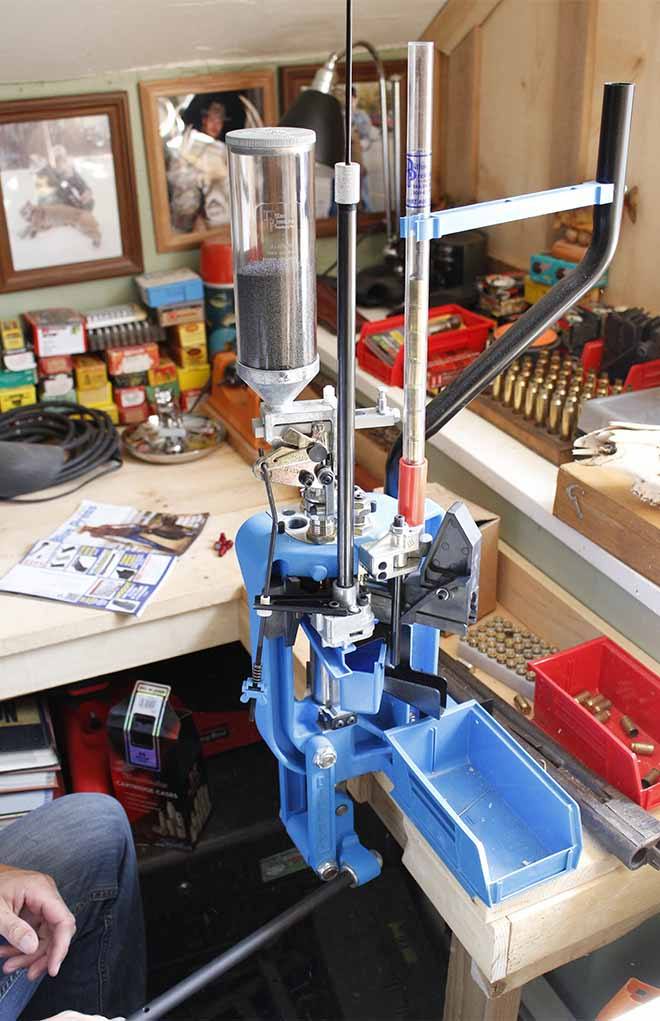
If you are overly concerned, see if a suitable loaner rifle is in camp in the event of delayed or lost luggage. Take your handloads hunting; I find a sense of satisfaction when I take an animal with my own “recipe.”
High-Volume Shooters
For those who spend their weekends putting a whole bunch of lead in the air, whether via plinking with a pistol or preparing for the gun games, it can be expensive to purchase the necessary volume of ammunition. Brass can be scrounged, and there are many affordable choices among pistol projectiles. Consequently, a quality progressive press can yield a respectable amount of ammunition in a short amount of time. My buddies and I use a Dillon 650 for our .45 ACP ammunition, and with cast-lead bullets or something such as Federal SynTech, we can keep the handguns well fed.
A Pastime That Keeps You in the Game
In its basic form, reloading is not difficult or dangerous … as long as you follow the rules—and follow them well. It allows you to have control over what goes downrange, how fast it goes and how precisely it lands. It’s a great way to spend time with hunting and shooting buddies in the off seasons and during colder months.

But most of all, it gives you more trigger time with your favorite guns. You’ll be at the range, developing your handloads, measuring velocities, trying new projectiles and taking care of other assorted shooting duties. And because the components are under your control, the same recipe can be used for a lifetime.
It will also change the way you shop for a rifle; you might find a gem in the dusty corner of the gun shop that you might not have considered because of a lack of available ammunition. Now, you can confidently bring that rifle home and begin gathering components. That, alone, is a game-changer.
The article originally appeared in the July 2019 issue of Gun Digest the Magazine.

Next Step: Get your FREE Printable Target Pack
Enhance your shooting precision with our 62 MOA Targets, perfect for rifles and handguns. Crafted in collaboration with Storm Tactical for accuracy and versatility.
Subscribe to the Gun Digest email newsletter and get your downloadable target pack sent straight to your inbox. Stay updated with the latest firearms info in the industry.

![Best Concealed Carry Guns In 2025 [Field Tested] Wilson Combat EDC X9S 1](https://gundigest.com/wp-content/uploads/Wilson-Combat-EDC-X9S-1-324x160.jpg)


![Best 9mm Carbine: Affordable PCCs [Tested] Ruger Carbine Shooting](https://gundigest.com/wp-content/uploads/Ruger-Carbine-Shooting-100x70.jpg)
![Best AR-15: Top Options Available Today [Field Tested] Harrington and Richardson PSA XM177E2 feature](https://gundigest.com/wp-content/uploads/Harrington-and-Richardson-PSA-XM177E2-feature-100x70.jpg)

I’m re-barelling my .308 Savage 99 C with a custom Bartlein octagon barrel with 5R rifling. I think it will have very good accuracy but if not I’ll play with forearm pressure to the underside of the barrel via a bolt and lock ring. IT will be insetted into a new laminated custom stock from Wieneg.